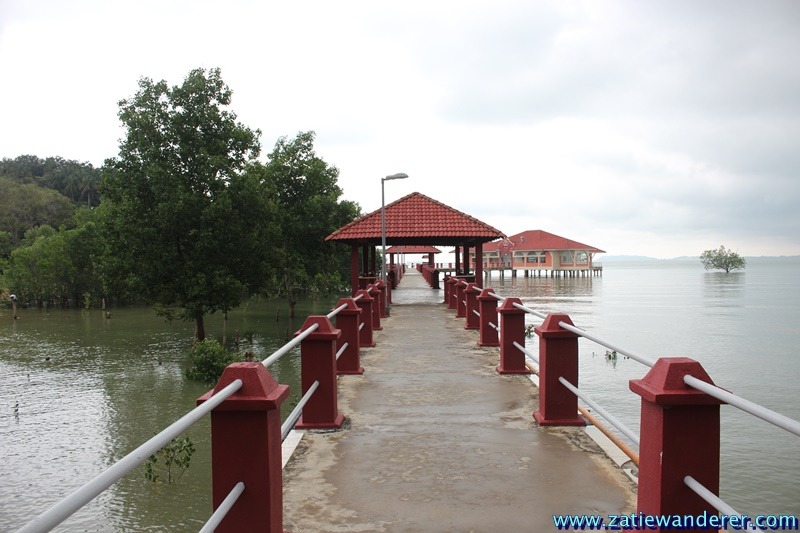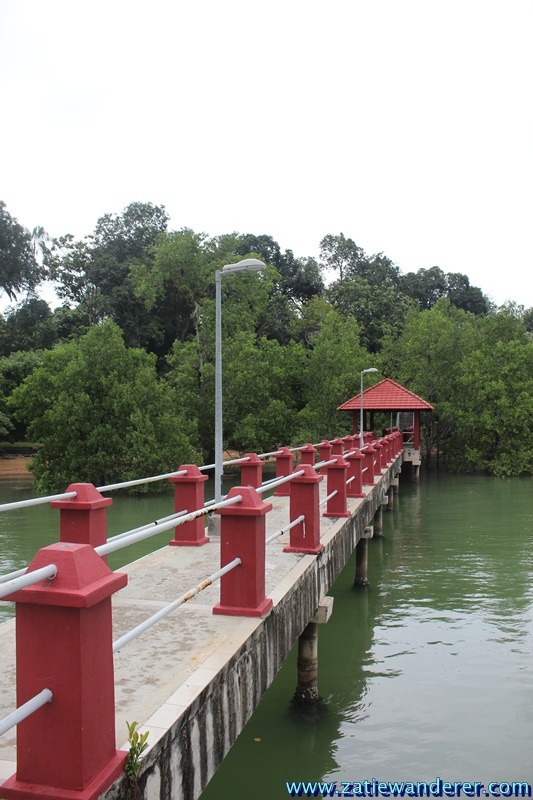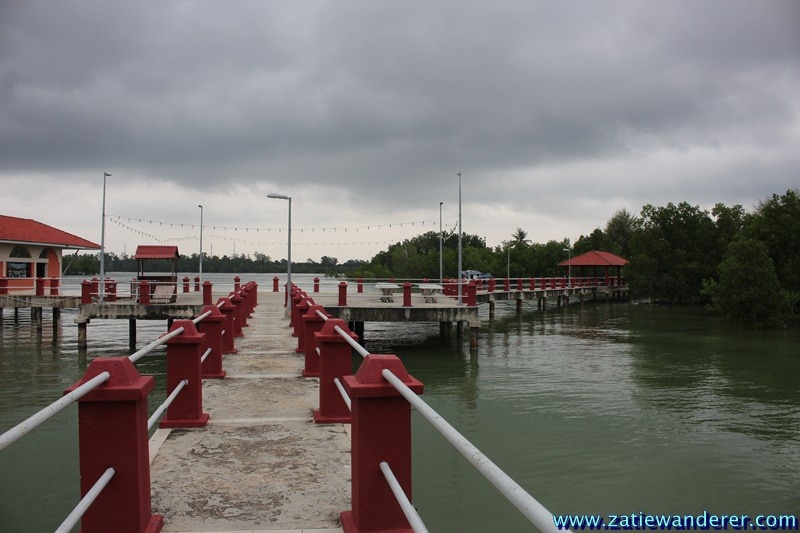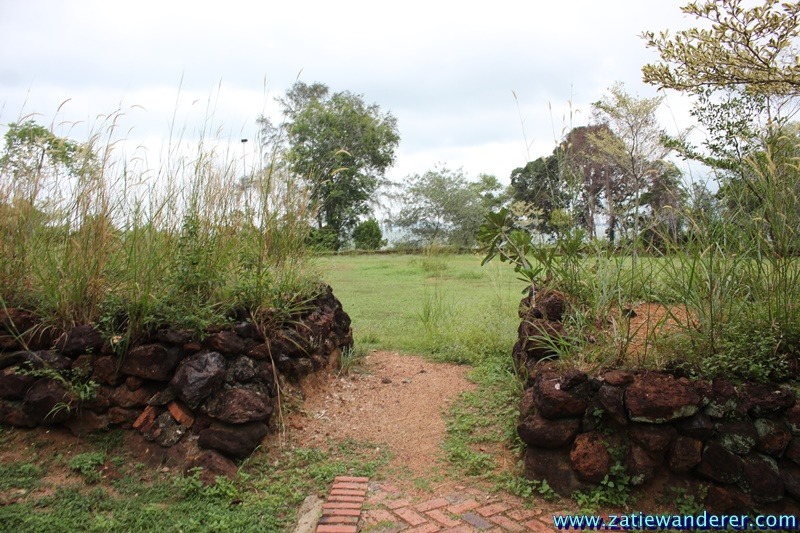Continuing from “Carpacker RMCO and Back To Hometown – 01 – Breakfast in Port Dickson & Teluk Kemang“.
This is the last blog post for the Carpacker RMCO project.
Next, from Teluk Kemang, we headed to Kota Bukit Supai, also known as Fort Supai or Dutch Fort. It’s not far, just 22.3km from Teluk Kemang. Along the way, we passed through Pasir Panjang town, where many food and fruit stalls exist. To experience the diversity in ‘carpacker’, it’s good to stop and buy, unlike the old method of just going from point A to point B without exploring what’s in between.
“Adventure is the journey and what you enjoy along the way. The mission of adventure is not to quickly reach the final destination. The final destination is just a reason to start the journey.”

If you search on Google Maps, the location shown is different from the one we entered. I suggest using the map attached above and stopping at the “gerai makan nelayan tepi kuala” (fisherman’s food stall by the estuary). There are many parking spots and it’s safe as many people eat there.
Alhamdulillah, as soon as we arrived here, 10 minutes later, the rain suddenly stopped even though the sky was still cloudy and dark. This is our second time here, but we haven’t climbed to the top of the hill before.
A brief history of Kota Bukit Supai (copied from the website www.melakakini.my):
The fort, built with laterite stone near the Kampung Nelayan, marks the end of Melaka as this historic site is near the border between Melaka and Negeri Sembilan. Known as Kota Lama, this location sits on a hilltop overlooking the Straits of Malacca, built hundreds of years ago by Bugis warriors who once ruled Linggi.
According to local residents, initially, the fort was a stronghold for Bugis soldiers under the rule of Daeng Lima Bersaudara, who began to dominate Linggi by building their empire. They made the area their territory center and a resting fort while expanding their reign to Johor, Riau & Lingga. The fort was then handed over to the Dutch after the Bugis soldiers lost to their colonial powers, making the Dutch take over administration and control tin mining activities around Sungai Linggi and Sungai Rembau.
The presence of Dutch soldiers from Sepoy, India, at that time, guarded the area, and the word ‘Sepoy’ has made the historical area name remain today as ‘Fort Supai’ or Kota Bukit Supai.
For those who have Bugis ancestry and are related to Daeng Lima Bersaudara, you can come here.

Entry is free, and you can walk along the provided long jetty. You’ll pass through mangroves and witness the beauty of trees created by Allah that act as buffers in case of tsunamis or large waves. There are also many unusual creatures among the mangrove trees.

This is on our right as we walk on the jetty.

You can see a solitary mangrove tree growing in the middle of the sea. Look at those heavy clouds, ready to release their rain at any moment.

After passing the first hut, we walked by a house turned restaurant. But it was closed at that time.

On the left, as we walk on the jetty, more mangrove trees are visible.

What does it look like from the entrance to the jetty until here? Here it is. At the far end is the vehicle parking area. The total length of this jetty to the foot of Bukit Supai is only 400 meters.

After passing the restaurant, there’s a second jetty leading to the foot of Bukit Supai. It’s quite deserted as there were no visitors at that time, but I encourage you to be brave because there’s nothing to worry about. The hill is quite low.

Taking a picture next to the restaurant before entering the second jetty.

Zoom in closer to see the large ship in the middle of the sea.

Let’s continue along the second jetty.

What’s the view from the restaurant area? See the picture above.

Okay, we’ve arrived at the foot of Bukit Supai. It’s located in Kuala Linggi, Melaka, right on the border with Negeri Sembilan, separated by the Linggi River.

As soon as you climb up the hill, you’ll be greeted by two old cannons.

Stepping a bit further ahead, there’s another cannon. I think this one is better for group photos as the surrounding area is more spacious compared to the one below.

Next to the cannon, there’s a long fort wall made of laterite stone. Actually, the area protected in the past is behind this wall. So, we climbed a path specially built for visitors to enter the fort.

Here’s the entrance to Kota Bukit Supai fort, guarded by two cannons.

Let’s go inside.

This is the area protected by the fort. What remains is a field suitable for playing football. The area here is only 3/4 the size of a football field.
But…
I’m sure there are hidden underground rooms here that might not have been explored yet. These rooms were usually used to store weapons or could even have tunnels leading to the sea or land as escape routes if the fort was about to be captured.

Let’s head back to our car. Thus ends our tour of Kota Bukit Supai. Previously, we only explored the jetty section. This was our first time climbing the hill.
After that, we headed to my sister-in-law’s house located near the road to the Ayer Keroh toll plaza. Initially, we wanted to visit Melaka Jetty to get a closer look at the jetty area for traveling to Dumai, Indonesia. And most importantly, I wanted to see for myself if the parking area is safe.
However, we had to cancel the plan because it was already past 3.00 PM, even though we promised to arrive at my sister-in-law’s house at 2.00 PM. I don’t like breaking promises.

My sister-in-law lives alone, but her yard is spacious and can accommodate two cars. Aqif called what’s in his hand, “Christmas tree leaf.”

We were then served sizzling mee made by her. It was really delicious. After finishing the mee, we were served a homemade mushroom soup with toast. Fuhh!!!

As usual, when hanging out at a relative’s house, we ended up napping for a bit. Before we knew it, it was Maghrib. We finally arrived at my in-laws’ village in Pontian at 11.25 pm.
Here are some pictures for the readers of activities in the village the next day…



Pounding ingredients in the mortar and pestle, hihihihi.
And that concludes our journey we call Carpacker RMCO, which will go down in history as a trip with a strange theme name compared to other ‘carpacker’ projects. Not sure how to explain it to our grandchildren, 30 years from now.


Leave a Reply